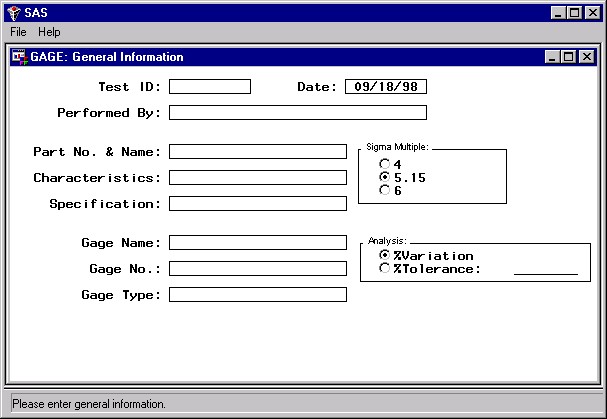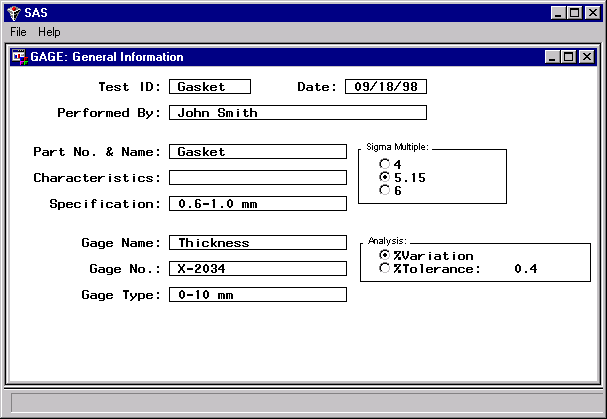Chapter Contents
Previous
Next
|
Chapter Contents |
Previous |
Next |
| The GAGE Application |
The main window in the application appears, as shown in Display A.1.
Display A.1: General Information Window

|
You specify the following general information for your gage study in this window: who performed the study, part number and part name, characteristics, specification, and gage name, number, and type.
The test ID is required for each set of data to be analyzed. It uniquely identifies each gage study. Date is set to the current date and can be changed. You also select either the percent of process variation analysis (%Variation) or the percent of tolerance analysis (%Tolerance). You must specify a tolerance value for the percent of tolerance analysis.
Set the multiple of sigma to whatever level you use for gage
studies. This multiple may be a standard level established within
your organization. For example, the automotive industry typically uses
![]() (ASQC Automotive Division/AIAG 1990), and SEMATECH
uses
(ASQC Automotive Division/AIAG 1990), and SEMATECH
uses ![]() (SEMATECH, Inc. 1991).
(SEMATECH, Inc. 1991).
The general information for the gasket thickness gage example is entered, as shown in Display A.2.
Display A.2: General Information for Gage Study

|
This study is identified with the test ID Gasket.
The analysis is based on ![]() , and a percent
of tolerance analysis based on a tolerance of 0.4mm is
requested.
, and a percent
of tolerance analysis based on a tolerance of 0.4mm is
requested.
|
Chapter Contents |
Previous |
Next |
Top |
Copyright © 1999 by SAS Institute Inc., Cary, NC, USA. All rights reserved.